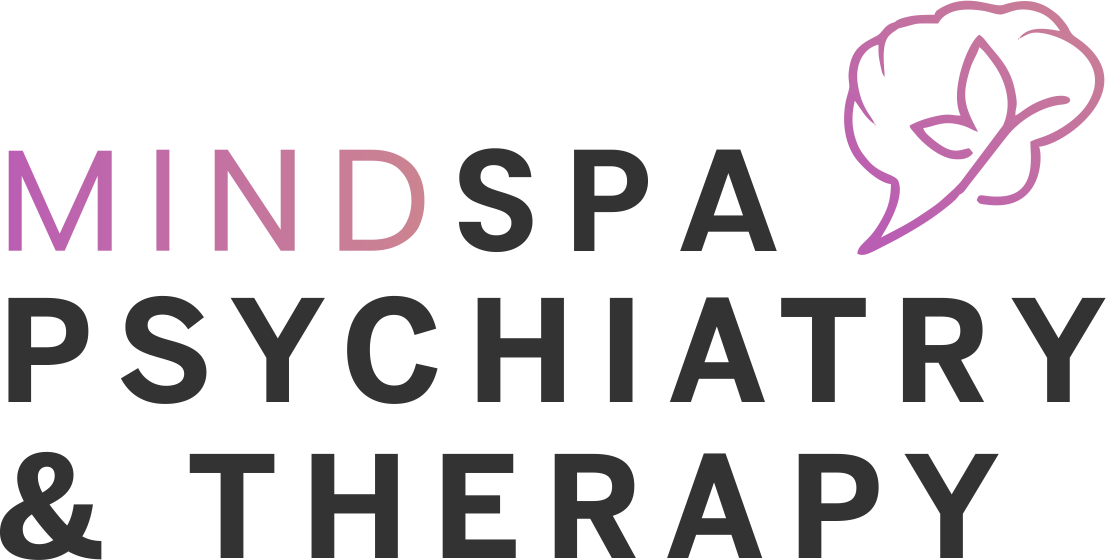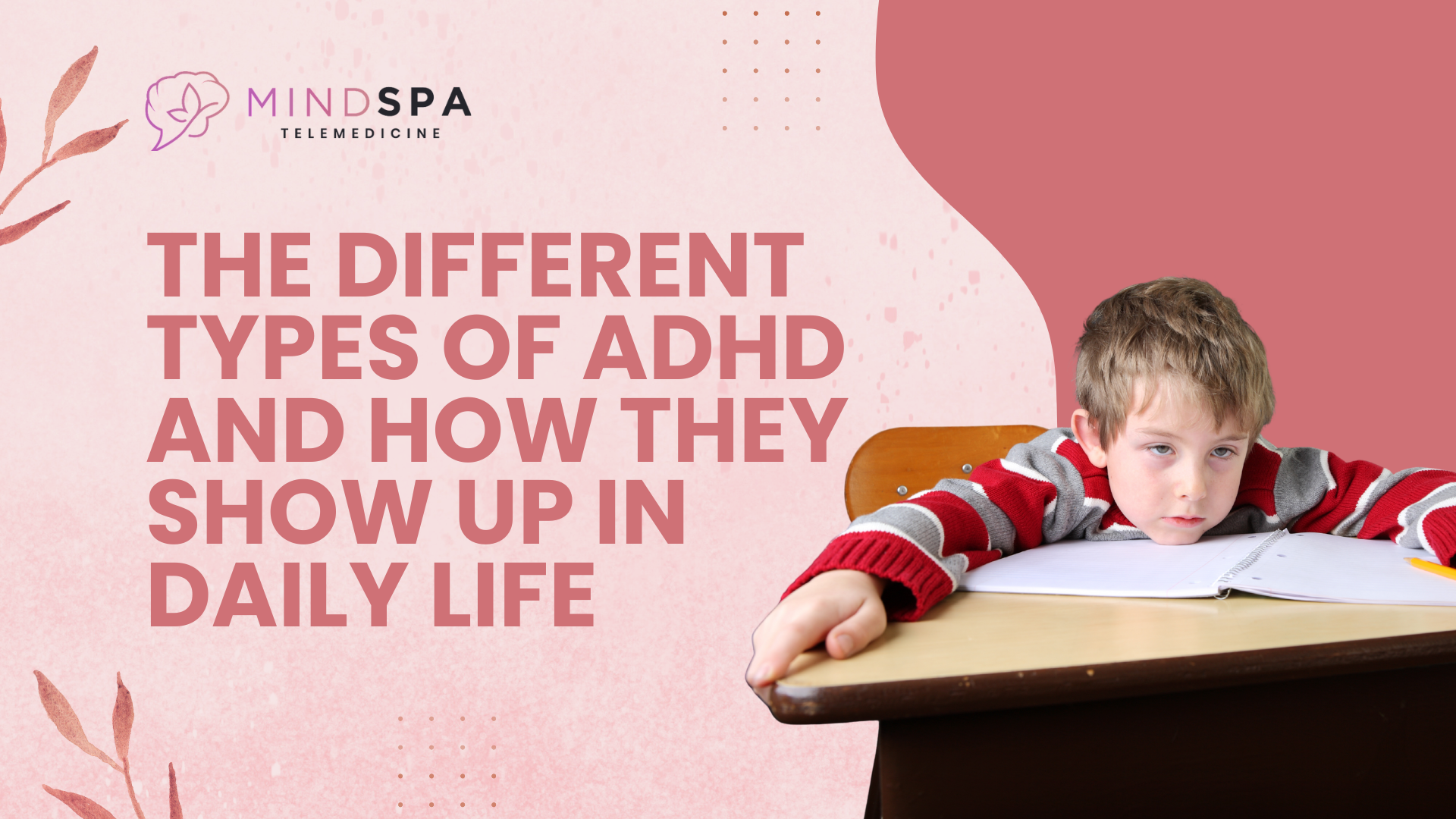Attention-Deficit/Hyperactivity Disorder (ADHD) is a condition that is not well understood. It is more complicated than most people believe, since most of them think it is merely about feeling restless or distracted.
ADHD is a neurodevelopmental disorder that influences the functioning of the brain in controlling focus, energy, and control. It may affect school, work, relationships, and daily obligations.
At MindSpa Psychiatry & Therapy, we believe that we can help our patients gain a clear understanding of their symptoms. That is why we provide TOVA tests, a special test that helps to assess the patterns of attention and have a clear idea about ADHD. This personalizes and makes treatment more effective.
The 7 Types of ADHD
Clinicians and researchers have pointed out various subtypes and patterns of ADHD. Although the concept of ADHD may be mostly applied in the medical community with the three main presentations (inattentive, hyperactive-impulsive, and combined), it is acknowledged by numerous experts that the symptoms may manifest in a more specific manner.
We shall discuss the 7 types of ADHD and their impacts on daily life.
1. Classic ADHD
It is the one that most people visualize when they hear about ADHD. It is a combination of hyperactivity, impulsivity, and inattention. A person with Classic ADHD may:
- Struggle to stay seated
- Interrupt conversations
- Lose track of details
- Forget assignments or responsibilities
In daily life, this might look like a child running around a classroom or an adult who struggles to finish tasks before starting new ones.
2. Inattentive ADHD
This type is often overlooked, especially in women and girls. People may not appear restless, but they are easily distracted and have trouble focusing. Signs include:
- Daydreaming often
- Difficulty staying on task
- Trouble following conversations or instructions
In everyday life, a person may read the same page multiple times without remembering the content or frequently misplace important items like keys or phones.
3. Over-Focused ADHD
Here, the individual has trouble shifting attention. Instead of being distracted by everything, they can become “stuck” on one thought or activity. Symptoms include:
- Difficulty moving from one task to another
- Obsessive worry about details
- Resistance to changing routines
Daily life might include being so focused on a work project that other responsibilities, like eating, resting, or attending appointments, get ignored.
4. Temporal Lobe ADHD
This type is linked to issues in the temporal lobes of the brain. It often includes emotional regulation challenges. Symptoms may include:
- Angry outbursts
- Trouble with memory
- Sensitivity to sounds or emotions
In daily life, this can mean reacting strongly to small frustrations, forgetting names or appointments, or struggling to keep calm in stressful conversations.
5. Limbic ADHD
This type combines ADHD symptoms with chronic low mood. Unlike depression, it is more about brain chemistry tied to focus and motivation. Signs include:
- Recurrent depressive moods.
- Low energy
- Problems with motivation.
Every day may seem to be a struggle with the constant exhaustion or the lack of motivation to even do something that may be pleasant.
6. Ring of Fire ADHD
This form involves intense hyperactivity in the brain, leading to extreme moods and impulsivity. It is one of the most difficult to manage. Symptoms include:
- Quick temper
- Sensitivity to noise and light
- Racing thoughts
In everyday life, a person may feel easily overwhelmed by crowds, become impatient in traffic, or jump from one idea to another without finishing tasks.
7. Anxious ADHD
This type combines ADHD symptoms with strong anxiety that needs to be controlled. A person may be both distracted and constantly worried. Signs include:
- Nervousness and tension
- Physical symptoms like rapid heartbeat or stomachaches
- Avoidance of stressful situations
Daily life may involve procrastinating tasks out of fear of failure, over-preparing for small challenges, or struggling to relax even in safe environments.
How ADHD Affects Daily Life
To live with ADHD, one will have to overcome difficulties in various spheres. The common struggles include:
- School or work: Failure to meet deadlines, putting things off, or forgetting critical information.
- Relationships: Interruption of conversations, lack of listening skills, or seeming not to be paying attention.
- Self-care: Difficulty with routines, disrupted sleep, or exercise routine.
- Emotions: Mood swings, frustration, or lack of self-esteem.
Nevertheless, it is not all about the difficulties in ADHD. A good number of individuals with ADHD are imaginative, motivational, and innovative. They are usually good in high-paced settings and are capable of introducing novel ideas into problem-solving. The trick is to learn to deal with symptoms in such a manner that they can show these strengths.
Getting Support and Treatment
The good news is that ADHD is treatable. With the right support, people can learn strategies to handle daily challenges and build healthier routines.
In MindSpa Psychiatry and Therapy, we know that living with ADHD is at times a question of overwhelming life. We intend to ensure that care is safe, supportive, and effective. In case you suspect you might have ADHD or wish to have clear knowledge of your symptoms, then you may want to schedule a visit and go through our TOVA test and have a better diagnosis of your symptoms.
Frequently Asked Questions
What does ADHD look like in daily life?
ADHD often looks like forgetfulness, distraction, or restlessness. A person may lose items, miss deadlines, or interrupt conversations. At the same time, they may also show creativity, strong energy, and out-of-the-box problem-solving.
What are the 7 types of ADHD?
These are the seven types, which are Classic, Inattentive, Over-Focused, Temporal Lobe, Limbic, Ring of Fire, and Anxious ADHD. The symptoms vary in each of them as focus, mood, or emotional regulation is impacted differently.
What is the 30% rule in ADHD?
The 30 percent rule implies that individuals the ADHD can perform approximately 30 percent below their age in terms of executive functioning competencies such as planning, organizing, and controlling themselves.
What are the 3 C's of ADHD?
The 3 Cs are Consistency, Compassion, and Creativity. They are coping mechanisms to ADHD- living with consistency, being kind to oneself, and being innovative in solving problems and daily difficulties.
When does the ADHD brain become fully developed?
The ADHD brain keeps on growing into adulthood. Scientific evidence indicates that a full maturation of the brain can occur at approximately age 25 to 30, particularly with regard to focus, planning, and impulse control.

